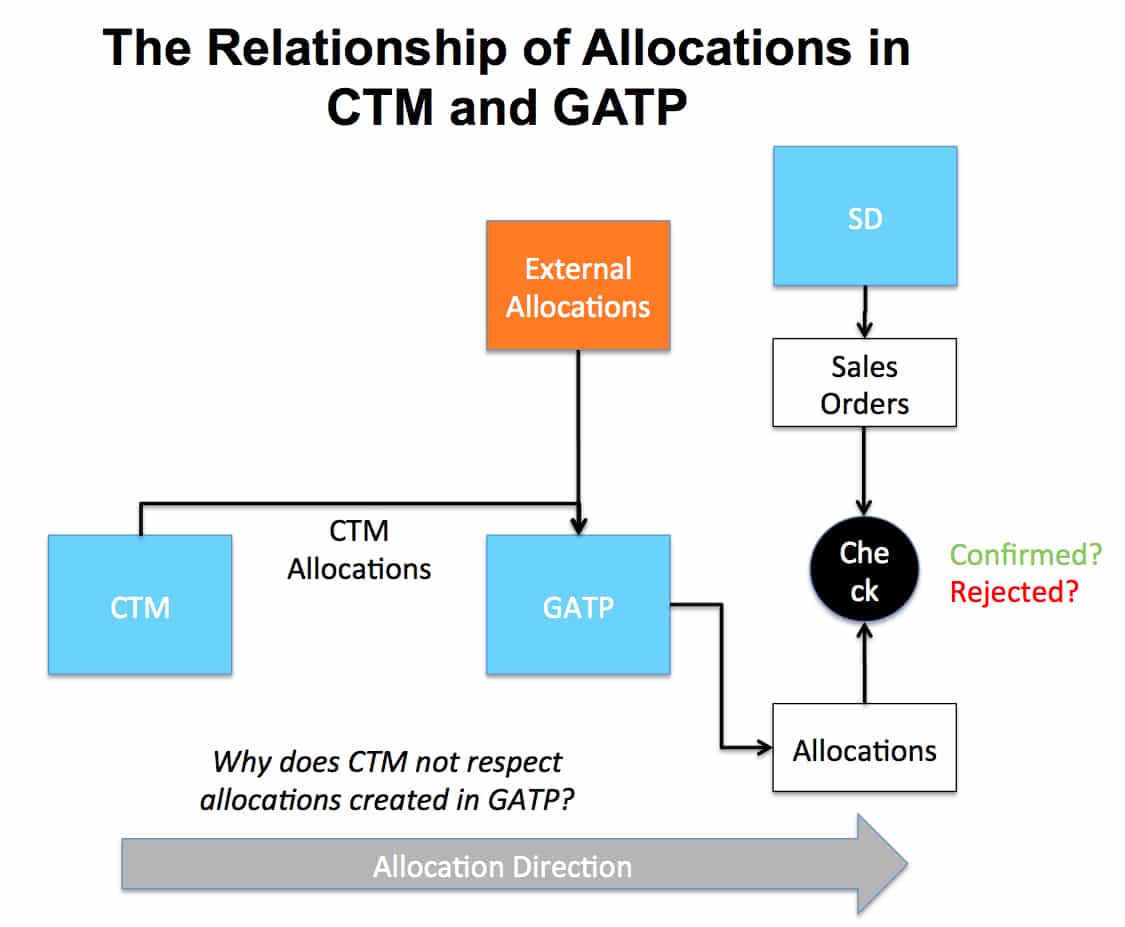The Relationship of Allocations in CTM and GATP
Executive Summary
- How allocations work with CTM and GATP.
- Are allocations bi-directional?
- What is the allocation storage application in APO?
- Why would having CTM respect GATP allocations be desirable?
Background on Allocations
Allocations are incorporated into GATP, which allows them to consume sales orders from these allocations. Once the customer’s allocation has been consumed, the future sales order will not be confirmed, which means they will not reach the SNP to be planned. This is a very effective way to control sales orders but does not control forecasts. That is, forecasts will be sent to the SNP, and SNP will plan to forecasts. One question which I was recently asked is whether SNP can be made to respect GATP allocations. To understand where it does and does not, it’s important to understand how allocations are created in GATP. Allocations can be created in several ways.
- One way is to connected GATP to allocation creation supply planning methods, such as CTM.
- The second way is to enter the allocations into GATP from outside of the system. (This is actually a novel way of modeling supplier capacities as is described in this article.)
This is described in the graphic below:

The allocation direction is one way. That is, allocations go from CTM / supply planning to GATP / order promising. The allocations can prevent sales orders from coming into supply planning, but the allocations are not bi-directional. So allocations that are entered into GATP are not reflected or seen in CTM. The only interaction described above is preventing the acceptance of sales orders once the allocation has been consumed.
Conclusion
The question I was asked was actually a fascinating one. It questions whether there is a tighter connection between CTM and GATP that actually exists. The concept of order promising is to represent the supply planning allocations to the sales order system. However, because GATP is the natural storage location for allocations, it raises the interesting question of having CTM respect these allocations.